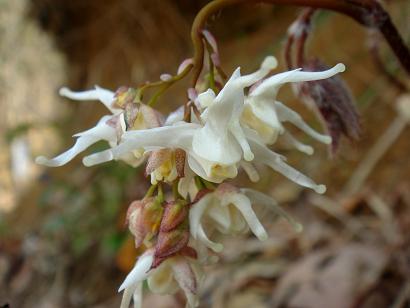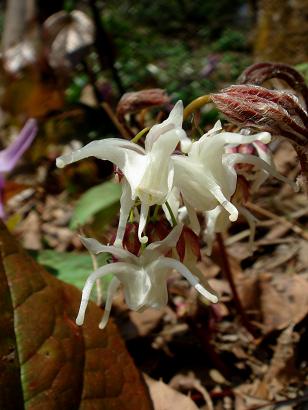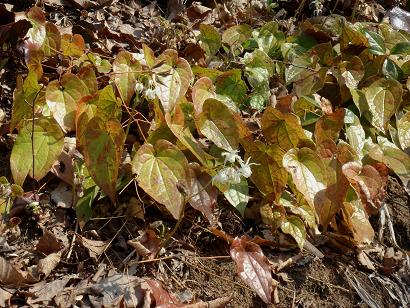 |
 |
 |
|---|---|---|
| April 2007 at Yukiguni Botanical Garden |
April 2007 at Yukiguni Botanical Garden |
April 2007 at Yukiguni Botanical Garden |
| Family | Berberidaceae |
| Subfamily | Berberidoideae |
| Tribe | Berberideae |
| Subtribe | Epimediinae |
| Scientific name | Epimedium sempervirens Nakai ex F. Maekawa |
| Synonyms | none |
| Common name | (Japanese common name) tokiwa ikari-sou (トキワイカリソウ, 常盤碇草 [meaning: evergreen anchor weed]), oh ikari-sou (オオイカリソウ, 大碇草 [meaning: large anchor weed]) |
| (English common name) none | |
| Distribution | (Japan) Honshu (west of Niigata Prefecture) |
| (Other nations) none | |
| Habitat | Mountane forest or foreat edge (Japan Sea side) |
| Chromosomal number | unknown |
| Description | Plants 30-60cm tall. Leaves biternate, leaflets each 5-10cm long, hairy. Flowers pink or white 3-4cm across, flwering in April to May. Evergreen. Perennial plants. |
| Reference | Epimedium sempervirens Nakai ex F. Maek. |
| Polysaccharide PS-A obtained from barrenwort deriving from plants belonging to the genus Epimedium, process for preparation thereof and phylactic and immunostimulating agents comprising said polysaccharide PS-A effective component (US Patent 4528188/1985) | |
| Compositions comprising icariside I and anhydroicaritin and methods for making the same (US Patent 6399579/2002) | |
| Medicament containing Epimedium extract for treatment of prostatic hyperplasia and prostatitis (US Patent 7250182/2007) |
 |
 |
 |
|---|---|---|
| April 2007 at Yukiguni Botanical Garden |
April 2007 at Yukiguni Botanical Garden |
April 2007 at Yukiguni Botanical Garden |
 |
|---|
| April 2007 at Yukiguni Botanical Garden |